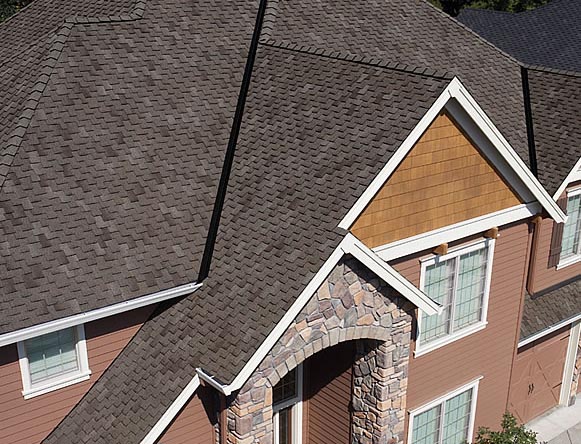Individual Testimonies on the most effective Gainesville FL Roofing Companies Readily Available
Individual Testimonies on the most effective Gainesville FL Roofing Companies Readily Available
Blog Article
Best Practices for Ensuring Correct Roofing Ventilation
A well balanced intake and exhaust vent ratio, typically 1:300, plays an essential function, with consumption vents ideally positioned at the lower edge of the roofing for cool air entry and exhaust vents at the top for warm air departure. Maintaining insulation away from vents is essential to prevent air flow restriction.
Understand Air Flow Basics
Effectively recognizing ventilation fundamentals is necessary for ensuring the long life and performance of roof systems. Effective air flow reduces wetness build-up and temperature extremes in the attic room, both of which can bring about considerable architectural damages over time. A well-ventilated roofing system aids in stopping common issues such as mold and mildew growth, wood rot, and ice dams, which can compromise the honesty of the roofing materials and the underlying frameworks.
The key objective of air flow is to help with the motion of air, permitting a regular exchange between the outside and interior environments. This equilibrium is achieved with a combination of consumption and exhaust vents that interact to maintain optimum airflow. Consumption vents, commonly situated along the eaves or soffits, enable fresh air to go into the attic space, while exhaust vents, commonly positioned at or near the roof covering ridge, make it possible for hot, humid air to leave.
Secret factors influencing the efficiency of roofing air flow include proper placement, appropriate sizing, and guaranteeing that both consumption and exhaust vents are unobstructed. Normal examination and maintenance are critical to recognize possible blockages, damages, or inadequacies in the ventilation system, thus protecting the roofing's performance and durability.
Sorts Of Roof Vents
Roof covering vents play a critical role in preserving reliable attic air flow and, by expansion, the general health of the roof system. Numerous types of roofing system vents are readily available, each with one-of-a-kind advantages tailored to particular roofing demands. Ridge vents, for instance, are installed along the roof's height, allowing cozy, damp air to get away from the attic. They supply continual ventilation and mix flawlessly with the roofline, making them both efficient and visually pleasing.

Soffit vents are installed under the eaves and operate in tandem with roof covering vents to guarantee a well balanced consumption and exhaust system. By permitting cooler air to enter from below, soffit vents promote the expulsion of warm air via upper vents. Gable vents, located on the exterior walls of the attic, deal another effective option, specifically in homes with saddleback roofs.
Examine Your Existing Ventilation

Next, consider the age and problem of your roof products and air flow elements. Older systems may not follow existing building ordinance or might have weakened gradually, reducing their performance. Conduct an extensive assessment to identify any kind of indications of deterioration, such as corrosion, damage, or voids that might jeopardize the system's efficiency.
Furthermore, gauge the attic room temperature and moisture degrees. Heats and humidity can suggest inadequate ventilation - gainesville roofing companies. Use a hygrometer and thermostat to get accurate analyses, comparing them with outside problems. Persistent her response discrepancies suggest possible issues that need addressing.
Installment Best Practices
Effective installment of roofing ventilation systems is paramount for making certain ideal efficiency and durability. Correct installation starts with recognizing the specific ventilation demands of the structure and the roof it covers. This entails calculating the correct proportion of consumption to wear down vents, normally sticking to the 1:300 guideline, which states one square foot of ventilation for every 300 square feet of attic room flooring area.

The positioning of vents is similarly critical. Intake vents should be set up at the roofing's reduced edge, commonly in the soffits, to enable awesome air to go into. Exhaust vents, on the various other hand, should be installed near or at the roof's height to facilitate the departure of warm, wet air. This creates an all-natural air movement that assists keep temperature and wetness equilibrium within the you can try here attic room.
Seal all vent links diligently to avoid air leaks and potential water seepage. Usage top notch materials and comply with maker standards to ensure longevity and effectiveness. Additionally, integrating ridge vents with baffles can substantially enhance air flow effectiveness by preventing wind-driven rainfall and snow from getting in the attic room.
Inevitably, exact setup of roof air flow systems reduces possible concerns such as mold and mildew growth, ice dams, and structural damages, making certain the roof covering's integrity and the building's overall wellness.
Normal Maintenance Tips
Uniformity in maintenance practices is basic to guaranteeing the long-term efficiency of roof covering ventilation systems. Throughout these evaluations, make sure that vents are free of particles, nests, and other obstructions that might restrain air flow.
Utilize a soft brush or a vacuum cleaner to eliminate dust and particles from consumption and exhaust vents. Be cautious not to harm the vent displays or louvers throughout the process.
Correct insulation is equally crucial. Make certain that attic insulation does not obstruct the vents, as this can badly limit airflow. If any type of insulation has moved or cleared up, rearrange or change it to preserve a reliable obstacle.
Last but not least, replace any harmed or missing out on parts without delay. Busted vents, split roof shingles, or shabby blinking can all add to inadequate ventilation and should be dealt with without hold-up. Regular upkeep makes certain that the roof covering air flow system works ideally, thereby extending the lifespan of the roofing itself.
Final Thought
Making certain proper roof covering air flow is vital for preserving the performance and toughness of a roof. Adherence to the 1:300 intake and exhaust vent proportion, combined with the strategic positioning of vents, is important. Routine biannual inspections, debris cleaning, and making sure insulation does not block airflow are critical practices. Carrying out these best practices will certainly promote a well-ventilated roof system, consequently mitigating potential concerns associated with moisture build-up and too much warm, inevitably prolonging the roofing's lifespan.
A well balanced intake and exhaust air vent ratio, typically 1:300, plays an essential function, with consumption vents ideally put at the reduced side of the roof covering for great air access and exhaust vents at the top for warm air exit. Intake vents, commonly located along the soffits or eaves, allow fresh air to go into the attic room room, while exhaust vents, often positioned at More Info or near the roofing system ridge, allow warm, damp air to leave.
Soffit vents are set up under the eaves and job in tandem with roof covering vents to ensure a well balanced intake and exhaust system. By allowing cooler air to go into from below, soffit vents assist in the expulsion of hot air via upper vents. Adherence to the 1:300 intake and exhaust vent ratio, paired with the strategic placement of vents, is important.
Report this page